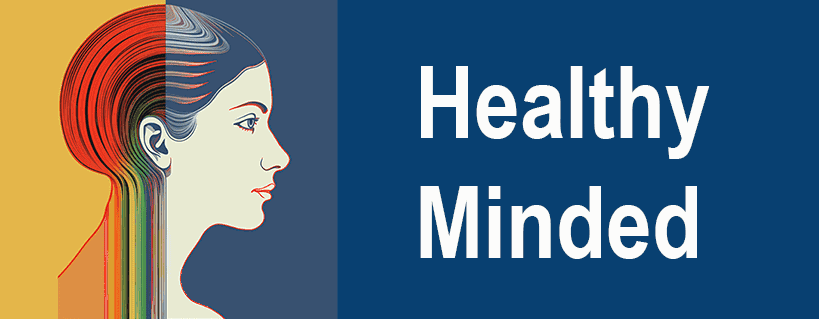
Psychology and mental health can sometimes feel like a labyrinth of technical jargon and abbreviations. If you’ve ever found yourself puzzled by such terms, this comprehensive glossary aims to elucidate them in a positive, informative, and engaging way. This glossary is more than just a list of definitions. It’s also a resource for exploring the rich and varied world of psychological theories, methods, and interventions.
You’ll discover how different approaches can help you understand yourself and others better, cope with challenges, and achieve your goals. We’re about to journey into the beautiful, complex world of therapy!
Mental health & mental disorders
To kickstart our glossary, let’s clarify some fundamental terms.
Mental health refers to our cognitive processes, behavioral, and emotional well-being. It’s about how we think, feel, and behave. Just like our physical health, our mental health can fluctuate. Challenges such as stress, grief, or illness can impact our mental health, leading to mental health problems or disorders.
Mental disorders, or mental illnesses, encompass various conditions affecting mood, thinking, and behavior. These include depression, anxiety, eating disorders, bipolar disorder, and obsessive-compulsive disorder (OCD). Mental health professionals diagnose these disorders using the Diagnostic and Statistical Manual (DSM).
The therapeutic space
Within the therapeutic space, there exist several treatment modalities, each tailored to address different mental health concerns.
Dialectical Behavior Therapy (DBT) is a modality designed primarily to treat borderline personality disorder (BPD) and other severe mental health disorders. DBT emphasizes developing four skills: mindfulness, distress tolerance, interpersonal effectiveness, and emotional regulation.
Rational Emotive Therapy (RET), another modality, focuses on altering irrational thought patterns. RET believes that it’s not the events that upset us, but our interpretations of them.
A significant part of therapy involves the client and the therapist working together to understand and change patterns of thinking, feeling, and behaving. This collaborative effort helps clients lead more productive lives, improve their relationships, and enhance their overall well-being.
Emotion, body & the person
Central to the therapy process is understanding emotions, the body, and the person as a whole.
Emotional regulation, or the ability to manage and respond to emotions, plays a crucial role in mental health. Therapists use techniques such as art therapy and movement therapy to help clients express emotions that are difficult to articulate.
At the same time, recognizing the physical sensations associated with emotions and understanding their origin can help individuals manage their responses better. This understanding can be particularly helpful for conditions like post-traumatic stress disorder (PTSD), where reminders of a traumatic event trigger intense fear or distress.
Finally, therapy also addresses a person’s relationships, role within the family, and how these interactions affect their mental health. Interpersonal therapy focuses on improving communication patterns and how people relate to others. For issues rooted in family dynamics, family therapy can be beneficial. It brings family members together and can encourage understanding and healthy relationships.
Therapy modalities for specific conditions
Certain therapy modalities are designed to address specific mental health conditions. Experiential therapy, for instance, uses expressive tools and activities such as role-playing or using props, allowing clients to surface and address hidden or subconscious issues.

For clients struggling with eating disorders, a range of therapies are available. Cognitive-Behavioral Therapy (CBT) often addresses harmful thought patterns contributing to destructive behaviors. Another approach is Motivational Interviewing, designed to strengthen personal motivation for positive change.
Solution-focused therapy is a goal-directed collaborative approach, primarily oriented towards developing a client’s vision of the future and providing support.
The healing process & the path forward
Lastly, embarking on the healing journey often requires understanding oneself deeper. Therapies encourage self-awareness and the development of coping skills. This journey can involve revisiting painful memories, which should always occur in a safe, therapeutic environment with a professional’s guidance.
Therapists also work on building a strong bond with their clients, fostering trust, and creating a secure attachment. This aligns with Attachment Theory, which asserts that a secure attachment to a significant person is essential for healthy emotional development.
Starting therapy can be daunting, but knowing these terms might help you navigate the mental health landscape more confidently. Remember, seeking help for mental health issues is a sign of strength, not weakness. Your feelings are valid, and help is always available.
Mental health treatment: A guide to the Lingo
If you’re curious about therapy, you might feel overwhelmed by the jargon that comes with it. Don’t worry; we’re here to help you make sense of the terms and concepts used in mental health treatment. Here are some of the most common ones you’ll encounter:
Mental Status Exam
This is a test that your therapist might ask you to take if they suspect you have a serious mental disorder that needs treatment. It’s like a mental check-up, where your therapist will evaluate your thoughts, feelings, and behaviors. Based on the results, they will decide if you need medication or other interventions. This will help them diagnose your condition and plan your treatment.
Psychological Testing
This is a way of measuring different aspects of your personality, intelligence, motivation, and anxiety. Your therapist will give you some standardized tests revealing your strengths and weaknesses. These tests can help you better understand yourself and find out what career or lifestyle suits you best.
Behavioral Activation (BA)
This type of therapy focuses on changing your actions to improve your mood. Your therapist will encourage you to try new activities that make you happy or give you a sense of accomplishment. This can help you break out of negative patterns and boost your self-esteem.
Acceptance and Commitment Therapy (ACT)
It will teach you to accept your thoughts and feelings without judging or trying to change them. Your therapist will help you identify your values and goals and how to pursue them despite any challenges or obstacles. This can help you live a more meaningful and fulfilling life.
Cognitive Behavioral Therapy (CBT)
This is one of the most popular and effective therapy for many mental health issues. It’s based on the idea that your thoughts, feelings, and behaviors are connected and influence each other. Your therapist will help you identify and challenge any negative or irrational thoughts that cause you distress and replace them with more positive and realistic ones. This can help you cope with stress, anxiety, depression, and other problems.
Treatment Plan
This document outlines your specific goals for therapy and how you and your therapist will work together to achieve them. It will list the symptoms or issues you want to improve, the methods or techniques your therapist will use to help you, and the expected outcomes or results.
Depression and Mood Disorders
These are disorders where you experience persistent or severe changes in your mood that interfere with your daily functioning. You might feel sad, hopeless, angry, or empty for no apparent reason or for longer than normal. You might also lose interest in things that used to bring you joy or isolate yourself from others.
Intensive Outpatient Care (IOP)
This type of treatment offers flexible and convenient daily services to help you improve your mental health and prevent relapse or hospitalization. It’s designed for various mental health concerns and allows you to build support networks or practice skills outside of your home or hospital.
We hope this guide has helped you understand some of the terminology used in mental health treatment. Remember, there’s nothing to be ashamed of if you need therapy. Taking care of yourself and your well-being is a brave and healthy step.
Conclusion
Navigating the complex mental health landscape can feel overwhelming, especially with the wealth of technical jargon and diverse therapy modalities. However, a clear understanding of these terms can empower you in seeking help and understanding your journey towards improved mental health.
Therapy is a valuable tool for anyone experiencing mental health concerns. It aids in healing, encourages self-awareness, and fosters emotional development. As we have seen, many types of therapy are designed to meet specific needs and circumstances.
Remember, starting therapy is a brave step towards prioritizing your well-being. Whether you’re dealing with a specific mental health disorder or simply aiming to enhance your overall well-being, understanding these terms can equip you to take charge of your mental health journey.
So, as you step into the world of therapy, let this glossary be your guide, aiding you in making informed decisions and leading you toward a healthier, happier life.
- A Beginner’s Guide to Visual Meditation Apps - July 13, 2023
- How PlushCare Therapy Can Change Your Life for the Better - June 11, 2023
- A Glossary of Therapy Terms - June 11, 2023
